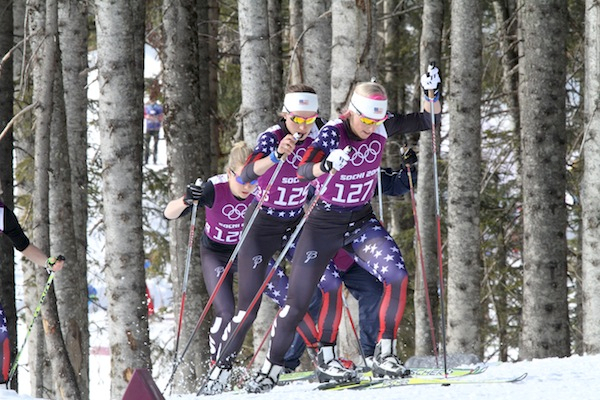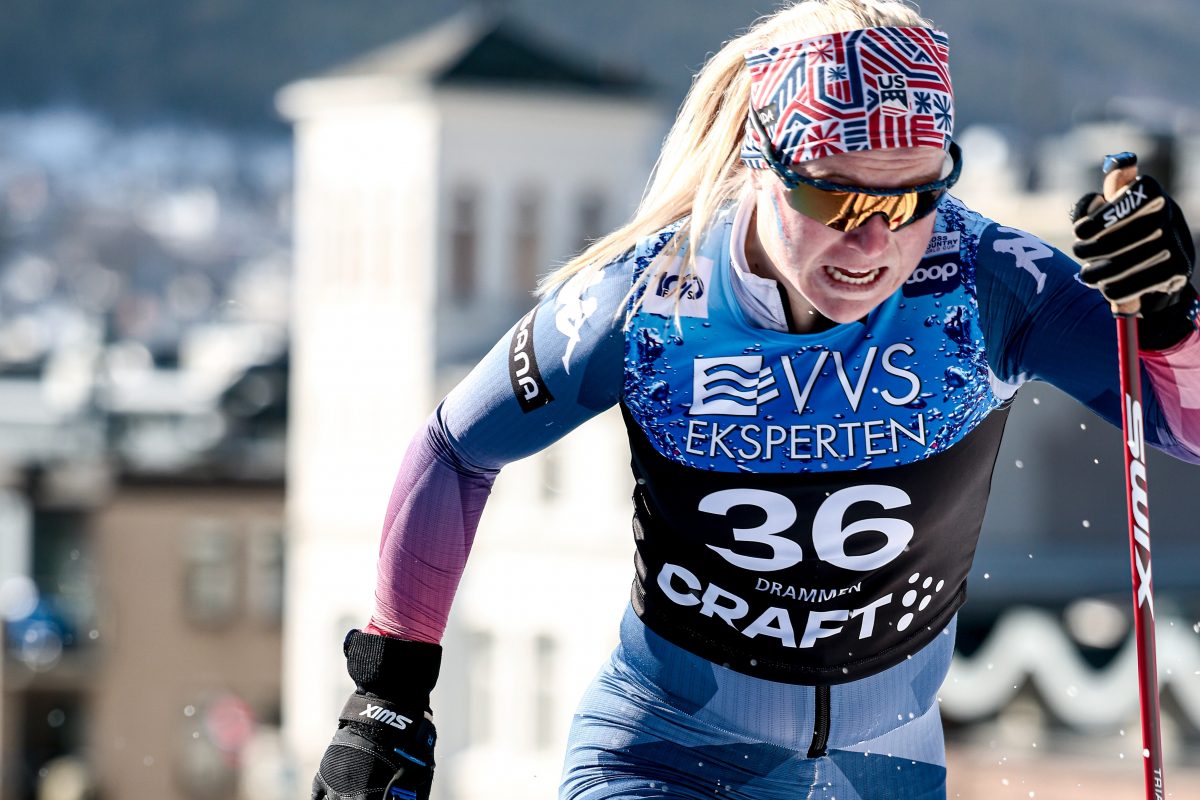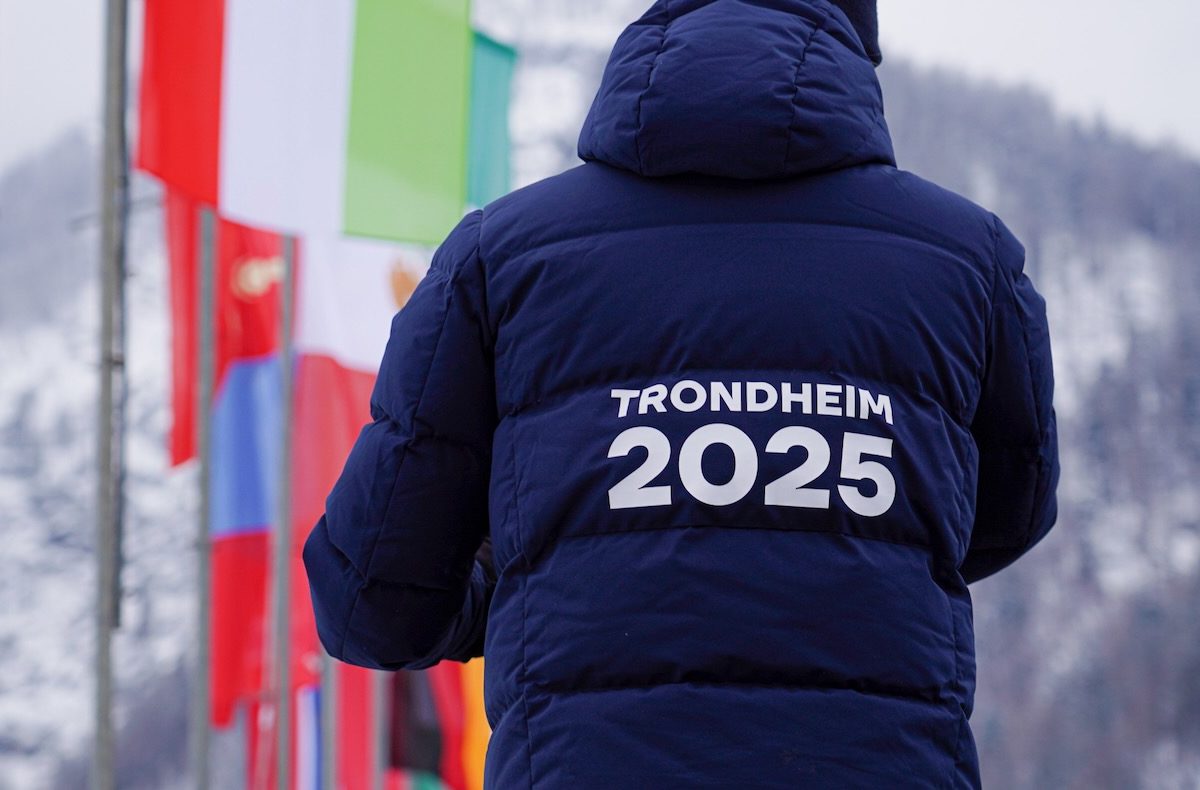
FasterSkier’s coverage is made possible through the generous support of Rudy Project.
SOCHI, Russia — Kikkan Randall has been waiting for Tuesday’s Olympic sprint race for eight years.
The Winter Games come every four years, but each time, the sprint alternates between two different techniques — classic, then skating, which is Randall’s specialty.
In the last Olympic skate sprint, in Italy in 2006, Randall placed ninth — at that point, a career-best result for the then-23-year old.
Since then, Randall, 31, has developed into a skate sprinting machine, finishing on the podium in 10 of her last 12 international races.
The Alaskan is the favorite to win gold on Tuesday, which would be only the second-ever Olympic medal for an American cross-country skier—and the first since Bill Koch won a silver in Austria in 1976.
“All of cross-country skiing in the U.S. is really excited for this moment,” said Holly Brooks, who trains with Randall in Anchorage and is one of her teammates at the Olympics. “I know—we all know—it would be huge for the sport, huge for the country, if she were to take gold, or a medal whatsoever.”
Winning the sprint on Tuesday will test Randall’s training preparation—her fitness, and her tactical acumen—and it will pit her against Norway’s Marit Bjoergen, an eight-time Olympic medalist with unprecedented athletic ability. It’s a race that Randall has taken unprecedented measures to practice for, like training on a trail on an Alaska glacier mapped out with GPS data to mimic the Sochi sprint course.
But it’s also a race that’s inherently unpredictable—one that’s just three minutes long, in which all that preparation can be derailed by a stray pole or ski.
That’s what happened in Randall’s last big skate sprint: At the World Championships in 2011, contact with another competitor spun Randall around and left her sprawled in the snow, watching her medal hopes race away.
The perfect terrain
Randall has been eyeing Tuesday’s sprint ever since the 2006 Olympics, in Italy. But her preparation grew more focused this year.
During the off-season, she trained on two courses in the U.S. laid out to mimic the Sochi trails, which one of the American coaches had mapped with a GPS during a race series in Russia last year.
One of the courses was groomed at her Anchorage club’s training facility on the Eagle Glacier, in the mountains just south of the city. The other was on the roads of Utah’s Heber Valley, where a pair of Randall’s coaches spent 10 hours in a truck searching for the perfect terrain for a training camp there.
“We had our maps out, and we would just drive from one neighborhood to the next,” said Erik Flora, the head coach of Randall’s Alaska Pacific University club team. “It was crazy.”
In Russia, Randall has spent the last few days practicing different segments of the course, from the start, to the first tricky corner, to the finish, which Flora said had been nudged upwards since last year into a slight uphill grade.
She sat out the first event at the Olympics, a distance race, which she said left her with a little too much free time.
“It’s kind of hard to not ski as much, and watching others race,” she said in a phone interview Monday. “I’ve been feeling anxious, excited.”
The sharpest tactician
The sprint course here is a demanding one—fast, and tough. From the start, athletes immediately hurtle into a sharp righthand turn, followed by a long climb that gradually flattens out before sending the skiers back down into the stadium for the homestretch.
The hill will be crucial, but the start of the race could be just as important, given that there are few easy places to pass over the 1.3-kilometer distance.
The start is one place where Randall may have an advantage over Bjoergen, the Norwegian.
“You’ve seen Marit off the line—she is slow off the line. Kikkan’s fast off the line,” said Brooks. “Of course, the trail is wide enough to pass. But there’s a best line, and if you pass on the outside, it’s longer.”
Flora wouldn’t divulge Randall’s likely tactics for the event, but he said he thinks Randall is the sharpest tactician out of all her competitors, with instincts built up over a career of more than 100 international races.
He and Randall don’t plot out a detailed strategy before sprints, so much as they prepare her to react as a sprint unfolds.
“There’s two ways to approach racing. One is to have a pretty structured plan for each race, where maybe the coach sits down and looks at it and says, ‘Okay, let’s try this,’” Flora said. “The other way to do it is to have the racer be a racer, and be the experienced one—be the one that sees the openings and runs the tactics. And that’s the philosophy I believe in.”
Up against the best
Randall’s most serious challenger in the skate sprint is likely to be Bjoergen, who has essentially been the Norse goddess of cross-country ski racing since the last Olympics, in 2010.
She won five medals there—three of them gold—and has beaten Randall twice in skate sprints this year, including the final one before the games, in Italy in January.
She also won Saturday’s distance race, for her first gold in Sochi.
Bjoergen’s a different athlete from Randall; the Norwegian excels at events of all lengths, and the sprint is just one of six races for her at the Olympics. She lacks Randall’s pure speed, but has a deep well of fitness she can draw on as the women race through quarterfinal, semifinal, and final heats in the sprint.
“It’s going to be very close, I think,” Bjoergen said in a brief interview Sunday, before a pair of fans pulled her away for a photo.
At one point several months ago, Bjoergen was rumored to be considering skipping the sprint, according to Brooks—though Egil Kristiansen, the Norwegian women’s coach, denied that.
Regardless, Randall said she was looking forward to having Bjoergen competing.
“She’s proven to be one of the best skiers of all time, and you want to be up against the best at the Olympics,” Randall said. “If she wasn’t in the race, I think you’d always kind of wonder what would have happened. So now, we’ll know.”
You get one chance
The sprint race can be one of the most confounding for skiers—the margins are so close, and a single tactical error, a misstep, or a crash can keep the strongest athlete off the podium.
“Small things can happen in a sprint that can influence the results,” said Kristiansen, the Norwegian coach. “It’s very close. You get one chance, and if you don’t take that chance, you’re out.”
Randall’s last skate sprint, a week ago in Italy, was a reminder of that unpredictability: After she led over the top of the tallest hill on the course, a group of skiers tucked in behind her, used the slipstream to save energy, and ultimately passed Randall on the homestretch.
She finished fifth, attributing the result to a poor tactical move.
There’s also the example from the last major skate sprint, at the World Championships in 2011—an event one notch below the Olympics, where Randall was also favored to win gold.
She was racing in a preliminary heat when she slipped on one of her opponent’s skis and crashed, leaving her with no hope of catching up.
For Randall and her friends and her teammates, her coaches and fans, it’s unsettling to consider that the same thing could happen in Russia.
“I have the utmost confidence in her, but I’m also really nervous. I’m almost more nervous for the sprint day—and I’m not racing—than I am for my own races. Just because I know the work, and the effort, and the passion that she’s put into this goal,” said Brooks. “I just kind of want Tuesday to come and go so we can know the outcome.”
Flora, Randall’s coach, acknowledged the uncertainty. But he also said that there are ways for athletes to reduce it, like making sure to stay at the front of the pack on a narrow course, where there are fewer opportunities to pass.
On a wider course, like in Sochi, there’s more flexibility.
“There’s risky ways to race, and there’s safer ways to race,” Flora said. “There are a lot of variables in sprint racing, but we try to minimize them.”
On Monday, Randall admitted she’s been nervous. But she also said that after her crash in in 2011, she’d come to realize that her buildup to the events like that one, and to the Olympics, have given her plenty to fall back on—like her string of wins on the World Cup circuit, or her two season titles in sprinting.
“I’m excited about tomorrow, but I’m happy it hasn’t been me off in some desolate mountain place focusing everything I can, every day, for one race. I’ve been able to have a lot of successes along the way,” she said. “And that definitely helps going into tomorrow, because I know no matter what happens, I’m going to be okay. I’ve had a great career.”
Nathaniel Herz
Nat Herz is an Alaska-based journalist who moonlights for FasterSkier as an occasional reporter and podcast host. He was FasterSkier's full-time reporter in 2010 and 2011.




3 comments
bikebedouin
February 10, 2014 at 11:45 am
Go Kikkan!
but more importantly, how can I watch the race LIVE?
gkentch
February 10, 2014 at 2:20 pm
“how can I watch the race LIVE?”
Officially: set up an account with nbcolympics dot com via your qualifying cable TV provider, blah blah blah. (But I think you might get like 30min free your first time, which would be more than enough to watch the finals.)
Unofficially: Google something like “front row sports” or “sport lemon.” I sort of assume such options are not legal. But they should be effective.
Go Kikkan.
gkentch
February 10, 2014 at 2:45 pm
Also – from the local paper –
Racing begins at 1 a.m. Alaska time with qualifications. The quarterfinal heats start at 3 a.m., the semifinals at 3:56 a.m. and the finals at 4:22 a.m.